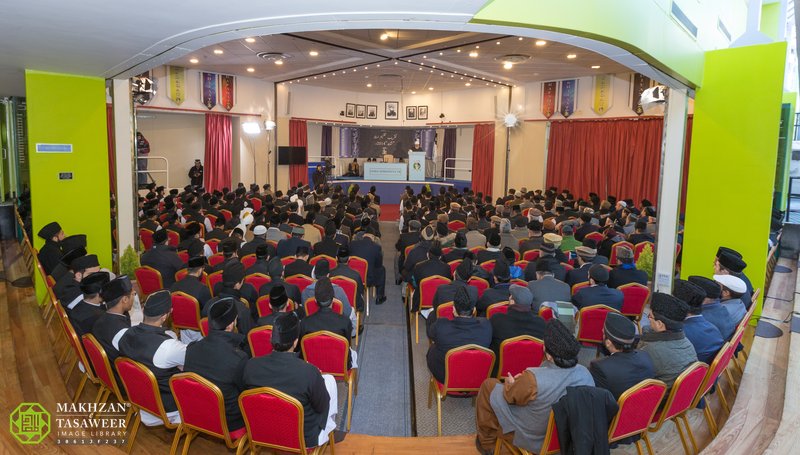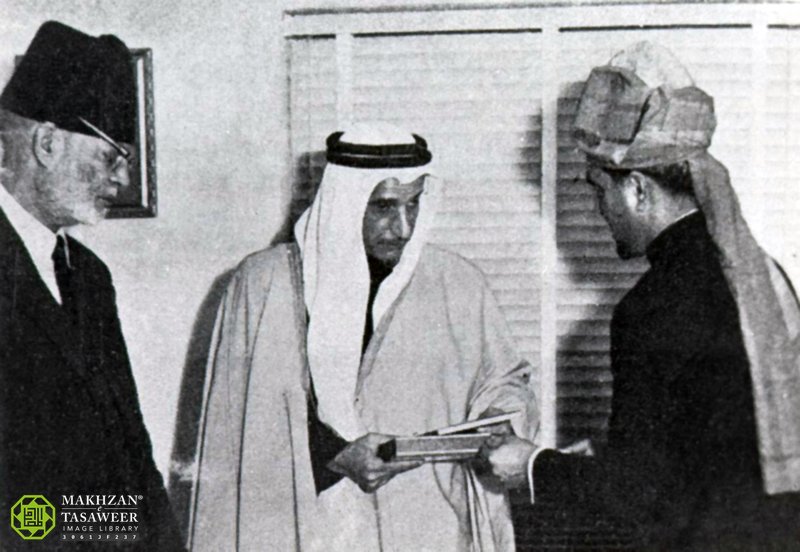A glimpse into the rich history of the Ahmadiyya Muslim Jamaat

8 December 1905: The Promised Messiahas shared his thoughts about a separate graveyard for his followers during a private sitting with his Companionsra. Huzooras stated, “I desire that a piece of land be acquired to serve as a graveyard, a monument and a reminder [for the generations to come].”
Huzooras added, “It will be an impactful spectacle to see [members of a] Jamaat who were united during their lifetime also united after their demise. This is very good […]. It is not an innovation to add inscriptions on gravestones; in fact, this serves as a reminder and every gravestone will serve as a piece of history of the Jamaat.” (Malfuzat [1988], Vol. 4, p. 586)
8 December 2017: During his Friday Sermon on this day, Hazrat Khalifatul Masih Vaa advised the governments of Muslim countries to make good political decisions, and called the attention of Ahmadis worldwide towards prayers for the Muslim ummah. (Al Fazl International, 29 December 2017, p. 5)
9 December 1944: Hazrat Musleh-e-Maudra addressed the younger members of the Jamaat belonging to the North-West Frontier region of the Indian subcontinent and urged them to devote their lives to the service of religion.
Huzoorra explained that a good method for preaching in this area was that the preacher should be a resident of the area and familiar with the customs and traditions of the people. (Tarikh-e-Ahmadiyyat, Vol. 9, p. 194)
9 December 1955: The Mubarak Mosque, the first purpose-built mosque in the Netherlands, was opened by Hazrat Sir Muhammad Zafrulla Khanra. This mosque, with three minarets and a capacity of 500 worshippers, was designed by Frits Beck and was completed with funds collected from Lajna Imaillah.
On 3 June 2006, Queen Beatrix of the Netherlands visited the Mubarak Mosque to commemorate the building’s 50th anniversary. (Al Fazl International, 2 June 2012, p. 9)

10 December 1894: The Promised Messiahas issued an announcement on this day for the eyes of the British Government, Queen Victoria – Empress of India, the Governor General of India, Lieutenant Governor of Punjab and other concerned influential figures. This contained a rebuttal of an article, titled A Dangerous Fanatic published in the Civil and Military Gazette on 24 October 1894. The article had misrepresented and deceitfully portrayed the Promised Messiahas. (Majmu‘ah-e-Ishtiharat [2019], Vol. 2, pp. 123-131)
10 December 1901: The Promised Messiahas was extremely worried for the citizens of India as the plague continued to wreak havoc and claim lives in many parts of the Indian subcontinent. On this day, out of sheer sympathy, he issued a written announcement in three languages – Arabic, Persian and Urdu. – so that his message could reach as many locals as possible and they could safeguard themselves from this rampant punishment of the plague. (Majmu‘ah-e-Ishtiharat [2019], Vol. 3, pp. 447-466)
10 December 1965: During his Friday Sermon on this day, Hazrat Khalifatul Masih IIIrh mentioned that in the next two to three decades the message of Ahmadiyyat will reach new heights. (Khutbat-e-Nasir, Vol. 1, p. 35)
11 December 1936: Hazrat Musleh-e-Maudra always reminded members of the Jamaat to turn towards God for every matter and to rely heavily on prayers. On this day, Hazrat Musleh-e-Maudra instructed members of the Jamaat to engage in fervent prayers and seek forgiveness from God Almighty. Whilst giving advice regarding prayer and repentance, Huzoorra said:
“At least one day in a year, you ought to shed tears before God Almighty for your sins as opposed to merely asking Him to fulfil your desires.” (Tarikh-e-Ahmadiyyat, Vol. 7, p. 324)
12 December 1911: On this day, in order to appease Bengali sentiments, Bengal was reunited by Lord Hardinge. This was in response to the Swadeshi movement’s riots in protest against the policy and the growing belief among Hindus that East Bengal would have its own courts and policies. Years prior to this development, the Promised Messiahas publicised this event in a prophecy. (Tarikh-e-Ahmadiyyat, Vol. 4, pp. 383-384)
12 December 1979: Ahmadi theoretical physicist and Nobel Laureate, Professor Mohammad Abdus Salam Sahib received many awards from all over the world. On this day, he was awarded with Nishan-i-Imtiaz by General Zia-ul-Haq, President of Pakistan. Nishan-i-Imtiaz (Order of Excellence) is a state-organised civil decoration of Pakistan. It is the highest honour given to any civilian in Pakistan based on their achievements towards world recognition for Pakistan or outstanding service for the country.
13 December 1987: Maqbool Ahmad Zabih Sahib reached Malawi, to establish an Ahmadiyya mission there. He was the first Ahmadiyya missionary to reach this East African country. (Silsila Ahmadiyya, Vol. 4, p. 844)
13 December 1991: Hazrat Khalifatul Masih IVrh instructed that every country where the Jamaat is established should have a tabligh centre, with a fully equipped library of Jamaat literature and other related necessary reference books. (Silsila Ahmadiyya, Vol. 4, p. 867)
13 December 2014: On this day, Hazrat Khalifatul Masih Vaa addressed the convocation of Jamia Ahmadiyya UK, in Haslemere. In his address, along with many other instructions, Huzooraa emphasised the importance of du‘a in the life of a missionary. (Al Fazl International, 2 January 2015)
14 December 1902: On this day, the Promised Messiahas was in Qadian and it is reported that there were some guests in town, some from Lahore and some who had travelled all the way from Burma, to seek blessings from the company of Hazrat Mirza Ghulam Ahmadas. (Malfuzat [1988], Vol. 2, p. 574)
14 December 1936: In order to connect Qadian with other large cities, telephone lines were set up. On this day, the installation work was completed.
At the request of the Government of India, Hazrat Musleh-e-Maudra inaugurated the installation by making the first call to Hazrat Chaudhry Sir Zafrulla Khanra, who then had the portfolio of Railways and Commerce in the Government of India. Mr Kapoor, a Subdivisional Officer of Telegraphs, and Mr Radol, a telephone engineer, worked hard and diligently to get this phone line up and running at the earliest. (Al Fazl, 16 December 1936, p. 2)

